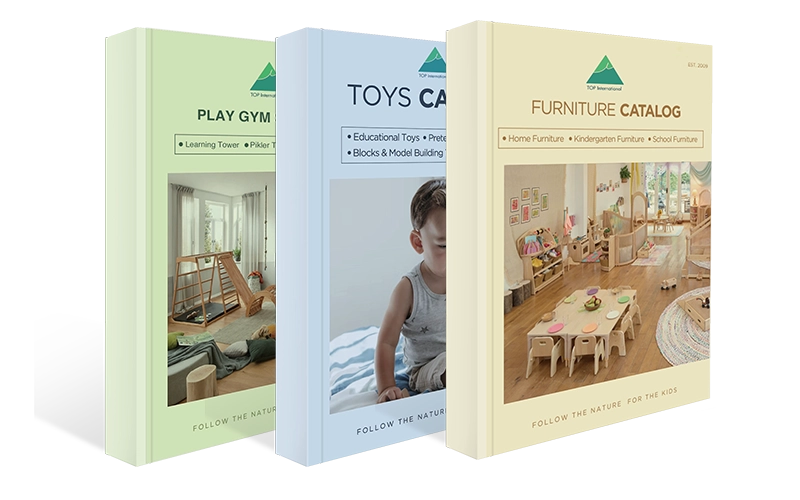Are you looking for ways to help your preschooler develop more potent physical and cognitive abilities? Perceptual motor skills are crucial for your child’s growth. They play a significant role in developing basic and complex skills for academic success and daily life. Are you wondering why your preschooler struggles with balance, coordination, or simple daily tasks? Do they have trouble sitting still, holding a pencil, or following instructions?
Improving perceptual motor skills can solve these challenges by enhancing physical coordination, sharpening focus, and supporting early learning development. These skills help children gain independence, perform better academically, and interact more confidently with their environment. When nurtured early, these abilities can prevent learning delays, reduce frustration, and promote a more enjoyable, successful preschool experience.
แน่นอน! ทักษะการรับรู้และการเคลื่อนไหวมีความสำคัญอย่างยิ่งต่อพัฒนาการช่วงต้นของเด็ก จำเป็นต่อการทำงานทางกายภาพ การเติบโตทางปัญญา และปฏิสัมพันธ์ทางสังคม การฝึกฝนทักษะเหล่านี้จะทำให้เด็กก่อนวัยเรียนสามารถมีส่วนร่วมในกิจกรรมต่างๆ ที่กำหนดประสบการณ์ทางวิชาการและอารมณ์ของพวกเขา
1. What Are Perceptual Motor Skills?
Perceptual motor skills involve receiving, interpreting, and responding to sensory information through coordinated physical movements. These skills integrate sensory inputs—such as sight, sound, and touch—with motor output, including walking, catching, writing, or balancing. These skills are essential for preschoolers, forming the foundation for academic learning, social interaction, and everyday independence.
When children see a ball approaching them and instinctively raise their hands to catch it, they use perceptual and motor skills. Their eyes process the speed and direction of the ball, and their brain coordinates the appropriate muscular response. This synchronization of senses and movement is critical for physical activities and tasks like reading, where visual motor perceptual skills help track words across a page, or writing, which relies heavily on fine motor skills and visual guidance.
These skills evolve naturally through play and exploration, but can also be supported through intentional activities. Games that involve balance, hand-eye coordination, or spatial awareness, such as puzzles, obstacle courses, or ball games, are excellent perceptual motor skills activities. Strengthening these skills early helps children improve focus, build confidence, and adapt more easily to structured learning environments. Putting, understanding, and nurturing perceptual motor skills equips preschoolers with tools for lifelong success in both physical and academic pursuits.
2. The Science Behind Perceptual Motor Skills
Perceptual motor skills are not simply about physical movement. They represent a highly intricate network of neural processes, brain structures, and sensory feedback loops that shape a child’s ability to interact with their environment. These skills allow children to move purposefully, learn from movement, and adapt to physical challenges.
Understanding the neurological foundation of perceptual motor development is critical to early childhood education, therapeutic intervention, and informed parenting. Research has shown that the human brain undergoes substantial structural and functional changes during preschool. These changes are particularly pronounced in motor control, balance, and sensory integration.
Below, we explore the three most influential brain regions involved in developing perceptual motor skills: the cerebellum, the motor cortex, and the sensory cortex.
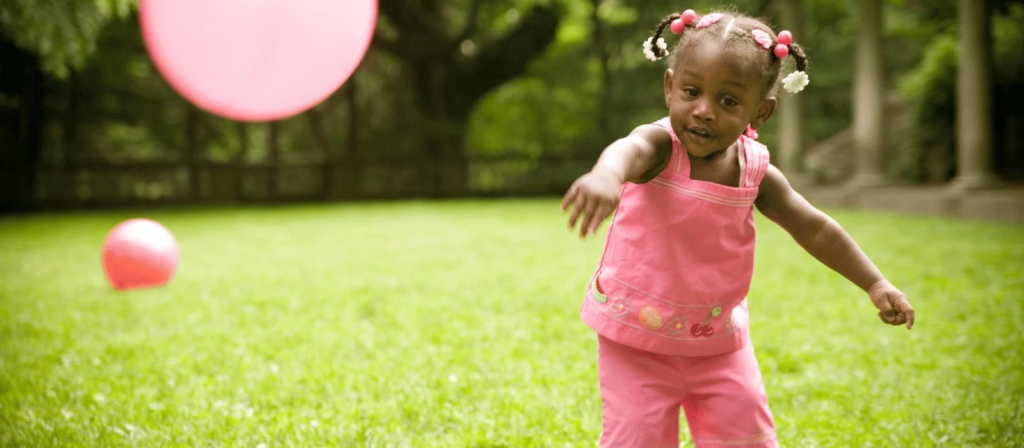
2.1 Cerebellum
The cerebellum, located at the base of the brain, plays a central role in motor control. While it does not initiate movement, it is crucial for coordination, precision, and accurate timing. The cerebellum receives information from the sensory systems, the spinal cord, and other brain parts, and integrates these inputs to fine-tune motor activity.
In preschoolers, the cerebellum supports:
- Balance and Posture: It helps children maintain equilibrium as they move, whether jumping, running, or sitting still. This is especially crucial in hopping on one foot or walking a balance beam, where even minor miscalculations can lead to falls or stumbles.
- Motor Learning: It plays a vital role in learning new movements. When a child first attempts to use scissors or knows how to throw a ball, the cerebellum adjusts their motor patterns with repeated practice, gradually leading to more fluid, efficient movements.
- Predictive Timing: The cerebellum helps children anticipate the timing of moving objects, such as catching a ball or jumping rope.
Developmental delays or underdevelopment in the cerebellum can result in clumsy movements, difficulty with rhythm, and problems with coordination. Children with these challenges may appear awkward or avoid physical activities due to fear of failure or embarrassment.
2.2 Motor Cortex
The motor cortex generates voluntary motor movements, particularly the primary motor cortex. Located in the frontal lobe, it sends signals to the body’s muscles, allowing a child to move intentionally.
For young children, the motor cortex is actively involved in:
- Initiating Movement: Whether a child raises their hand, throws a ball, or claps to music, the motor cortex is firing neural impulses to specific muscles, making those actions possible.
- Gross and Fine Motor Control: Larger body movements such as running or jumping rely on the gross motor areas, while intricate actions like buttoning a shirt or drawing require fine motor control, governed by different regions within the motor cortex.
- Skill Refinement: As children practice physical tasks, the motor cortex refines its control over muscles, improving precision. For example, early attempts at writing may be shaky, but with repetition, the motor cortex strengthens its neural pathways for smoother control.
This region is particularly plastic in early childhood, meaning it can adapt and change quickly in response to learning and environmental input. This neuroplasticity underscores the importance of providing diverse and repeated movement experiences during preschool.
2.3 Sensory Cortex
The sensory cortex, especially the somatosensory area in the parietal lobe, processes sensory information such as touch, temperature, pressure, and proprioception (the sense of body position).
In the context of perceptual motor skills, the sensory cortex:
- Translates Sensory Input into Action: When a child feels the texture of a puzzle piece or the weight of a ball, the sensory cortex interprets that data, allowing the brain to adjust motor output accordingly.
- Supports Proprioception: This internal sense helps a child know where their limbs are in space without looking. For example, reaching for a cup without knocking it over depends on accurate proprioceptive input and response.
- Enables Tactile Discrimination: Differentiating between surfaces, textures, or temperatures helps children interact safely and effectively with their environments.
Children with sensory processing issues may receive distorted information from their environment, leading to over- or under-reactions. A light touch may feel like a poke, or they may seem unaware when they bump into something. These inconsistencies can affect their confidence, self-regulating ability, and overall development.

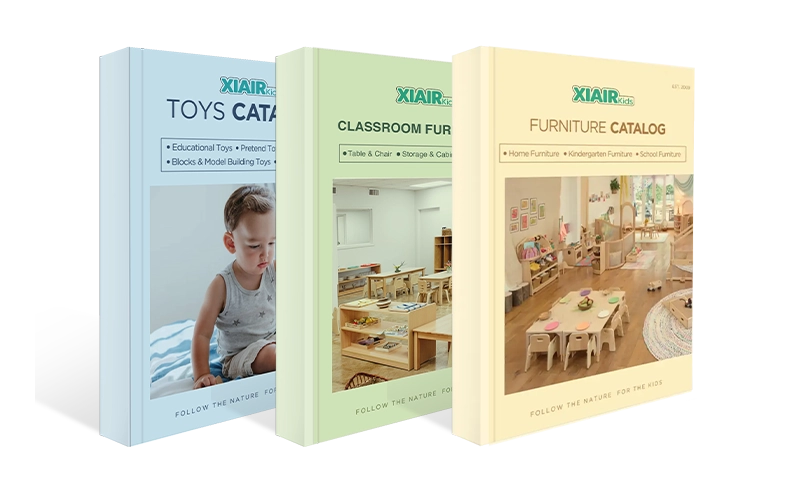
3. Why Is Perceptual Motor Skills Development Important?
Developing perceptual motor skills is vital for preschoolers because it lays the foundation for physical coordination, academic readiness, and social interaction. These skills help children process sensory information and translate it into purposeful movement, like writing, balancing, or following directions. Strong perceptual and motor skills enhance focus, boost confidence, and support independence in daily tasks. Children may struggle with learning, behavior, and basic motor functions without them. Early development ensures smoother transitions into structured learning environments and sets the stage for long-term success.
3.1 Types of Perceptual and Motor Skills
- ทักษะการเคลื่อนไหวร่างกายโดยรวม:การเคลื่อนไหวเหล่านี้เกี่ยวข้องกับกลุ่มกล้ามเนื้อขนาดใหญ่และช่วยให้เด็กๆ สามารถเดิน กระโดด และทรงตัวได้ ทักษะการเคลื่อนไหวร่างกายขั้นพื้นฐานเป็นพื้นฐานสำหรับการพัฒนาทางกายภาพ
- ทักษะการเคลื่อนไหวที่ดี:ทักษะการเคลื่อนไหวที่ดีเป็นการเคลื่อนไหวเล็กๆ น้อยๆ ที่แม่นยำมากขึ้นซึ่งเกี่ยวข้องกับมือและนิ้ว เช่น การหยิบของขนาดเล็ก การระบายสี หรือการถือดินสอ
Both motor and perceptual skills work together in everyday tasks. For example, when a child is running and catching a ball, they use visual motor perceptual and motor skills to complete the task. This is why preschoolers must practice both skills to support their development.

3.2 Foundation for Learning and Development
เมื่อเด็กๆ พัฒนาทักษะการเคลื่อนไหวและการรับรู้ ทักษะเหล่านี้จะช่วยสร้างรากฐานสำหรับความสำเร็จด้านวิชาการและสังคมในอนาคต ทักษะการเคลื่อนไหวและการรับรู้ช่วยให้เด็กก่อนวัยเรียนมีสมาธิ จดจำข้อมูล และประมวลผลโลกที่อยู่รอบตัวพวกเขา ตัวอย่างเช่น การเขียนต้องอาศัยการผสมผสานของ visual motor coordination และทักษะการเคลื่อนไหวที่ดี เด็กที่มีการรับรู้ที่ดีขึ้น ทักษะการเคลื่อนไหว จะมีความสามารถในการจับดินสอได้ดีขึ้น และเข้าใจวิธีการเขียนตัวอักษรและตัวเลขได้ดีขึ้น
ทักษะเหล่านี้ยังช่วยเพิ่มความสามารถในการแก้ปัญหา ปฏิบัติตามคำสั่ง และทำงานที่ต้องใช้สมาธิ ซึ่งล้วนจำเป็นต่อความสำเร็จทางการศึกษา
3.3 Active and Independent Living
เด็กก่อนวัยเรียนที่พัฒนาทักษะการรับรู้ทางร่างกายได้ดีจะสามารถทำกิจกรรมประจำวันได้ด้วยตนเอง กิจกรรมง่ายๆ เช่น การแต่งตัว แปรงฟัน หรือป้อนอาหารตัวเอง ต้องใช้ทักษะการรับรู้ทางประสาทสัมผัสและการประสานงานการเคลื่อนไหว เมื่อเด็กเรียนรู้ที่จะเชี่ยวชาญงานเหล่านี้ พวกเขาจะมีความมั่นใจและรู้สึกเป็นอิสระ ซึ่งเป็นสิ่งสำคัญต่อความเป็นอยู่ทางอารมณ์ของพวกเขา
ความเป็นอิสระในการทำภารกิจประจำวันยังช่วยส่งเสริมให้เกิดความนับถือตัวเองมากขึ้น และเตรียมเด็กๆ ให้พร้อมสำหรับความรับผิดชอบที่ซับซ้อนมากขึ้นเมื่อพวกเขาโตขึ้น

3.4 Brain Function and Skill Development
Engaging in activities that enhance perceptual motor skills can have a lasting impact on brain development. The brain constantly processes sensory input and directs motor actions, which strengthens neural connections and helps the brain grow. Activities that challenge a preschooler’s perceptual and motor skills lead to improved attention, memory, and problem-solving abilities.
ยิ่งไปกว่านั้น การพัฒนาทักษะการมองเห็น การเคลื่อนไหว และการรับรู้ทางสายตาสามารถปรับปรุงการทำงานทางปัญญา เช่น การอ่าน การรับรู้เชิงพื้นที่ และการใส่ใจรายละเอียด ซึ่งเป็นสิ่งจำเป็นสำหรับการเรียนรู้ทางวิชาการ
3.5 Complex Task Practice
ทักษะการเคลื่อนไหวทางการรับรู้ยังทำหน้าที่เป็นพื้นฐานในการฝึกฝนสำหรับงานที่ซับซ้อนมากขึ้นซึ่งเด็ก ๆ จะพบเจอในภายหลัง การฝึกฝนทักษะการเคลื่อนไหวทางการรับรู้ตั้งแต่เนิ่น ๆ เช่น การทรงตัว การวาดภาพ หรือการใช้กรรไกร จะช่วยให้เด็ก ๆ พัฒนาทักษะการประสานงานที่จำเป็นสำหรับงานที่ท้าทายมากขึ้น เด็กก่อนวัยเรียนที่ฝึกทักษะการเคลื่อนไหวทางการรับรู้และแนวคิดเกี่ยวกับการเคลื่อนไหวจะพบว่าการเปลี่ยนผ่านไปสู่กิจกรรมในโรงเรียนและกีฬาที่มีโครงสร้างในภายหลังนั้นง่ายขึ้น
การเชี่ยวชาญทักษะพื้นฐานเหล่านี้ยังช่วยให้เด็กๆ เรียนรู้งานใหม่ๆ ได้ง่ายยิ่งขึ้นอีกด้วย Once children have developed the basic motor and perceptual skills needed for physical activities, they can move on to mastering other, ทักษะที่ซับซ้อนมากยิ่งขึ้น
3.6 Everyday Activities
กิจกรรมในชีวิตประจำวัน เช่น การขี่จักรยาน การแต่งตัว หรือการต่อบล็อก ล้วนอาศัยทักษะการเคลื่อนไหวทางการรับรู้ ทักษะเหล่านี้มีความสำคัญอย่างยิ่งต่อการดำเนินชีวิตในโลกที่อยู่รอบตัว ตัวอย่างเช่น ทักษะการเคลื่อนไหวทางการรับรู้ เช่น การทรงตัวด้วยเท้าข้างเดียวหรือการกระโดดเชือก ช่วยให้เด็กก่อนวัยเรียนฝึกการประสานงานทางร่างกายและการรับรู้เชิงพื้นที่
เมื่อเด็กก่อนวัยเรียนฝึกฝนกิจกรรมเหล่านี้ ทักษะการเคลื่อนไหวจะดีขึ้น และสร้างความมั่นใจและความเป็นอิสระ ทักษะการเคลื่อนไหวและการรับรู้การเคลื่อนไหวมีความสำคัญพื้นฐานต่อการดำเนินชีวิตประจำวัน
3.7 Perception and Motor Skills
การเชื่อมโยงระหว่างการรับรู้และทักษะการเคลื่อนไหวมีความสำคัญอย่างยิ่งต่อพัฒนาการโดยรวมของเด็กก่อนวัยเรียน ทักษะการเคลื่อนไหวทางประสาทสัมผัสช่วยให้เด็กๆ สามารถใช้ประสาทสัมผัสเพื่อควบคุมการเคลื่อนไหวทางร่างกายได้ หากเด็กมีปัญหาในการประมวลผลข้อมูลจากประสาทสัมผัส อาจส่งผลให้เกิดความท้าทายในการประสานงานและการทำงานทางกายภาพ
Children can improve their sensory processing abilities and motor coordination by engaging in activities that strengthen this connection, such as fun activities for perceptual motor skills or examples of perceptual motor skills involving visual tracking or tactile play.

3.8 Participate in Group Play
Group play is a cornerstone of preschool education. Children learn to take turns, cooperate, and navigate social cues through movement-based activities. Playing tag, building a fort, or dancing to music involves perceptual motor engagement.
A child with well-developed perceptual motor skills can:
- Move confidently among peers without frequent collisions or hesitation.
- Read body language and anticipate the movements of others.
- Maintain spatial awareness while respecting personal space boundaries.
Children who struggle in this area may avoid physical play, become easily overwhelmed, or appear clumsy or socially withdrawn. This can lead to exclusion from peer interactions and missed opportunities to develop essential interpersonal skills.
In contrast, strong perceptual motor abilities help children:
- Engage fully in cooperative tasks like passing a ball or forming a circle.
- Adapt their physical responses to match the intensity of group activity.
- Feel more competent, increasing their desire to participate.
When preschoolers experience success in group play, it fosters not only motor development but also self-esteem, social bonding, and emotional regulation.
3.9 Follow Multi-Step Instructions
Preschoolers are often required to follow instructions involving cognitive processing and motor responses. For example, when a teacher says, “Pick up your crayons, walk to the bin, and place them inside,” the child must integrate auditory input with memory, spatial awareness, and body movement.
Perceptual motor skills are at the core of this integration. The child needs to:
- Hear and process each component of the command.
- Understand spatial terms such as “behind,” “under,” or “next to.”
- Execute fine and gross motor actions in the correct sequence.
Children with underdeveloped skills may lose track of steps, move inefficiently, or misinterpret directions. This can frustrate both the child and the adult and may lead to behavioral issues or a false perception of inattentiveness.
On the other hand, children with refined perceptual motor abilities can:
- Navigate sequences of tasks with greater ease.
- Coordinate their actions more efficiently.
- Develop a sense of independence in responding to classroom routines.
This skill is particularly critical as children transition into kindergarten, where classroom expectations become increasingly complex.

3.10 Transition Between Activities Smoothly
Transitions—shifting from one task or setting to another—are daily events in ห้องเรียนก่อนวัยเรียน. Whether moving from outdoor play to circle time or changing from a block-building activity to lunch, transitions require children to shift attention, change body orientation, and regulate their physical actions.
Perceptual motor skills support smooth transitions by helping the child:
- Sense changes in the environment through visual and auditory cues.
- Adjust body posture and movement direction without stumbling or crashing.
- Understand spatial organization to find where they’re supposed to go next quickly.
Without these abilities, transitions can feel chaotic. A child may bump into others, struggle to navigate around furniture, or become overwhelmed by the shift in sensory stimuli. Such struggles often result in meltdowns, delays, or resistance to change.
However, when perceptual motor skills are intact, transitions become opportunities for independence. Children learn to:
- Follow movement-based routines with minimal prompting.
- Regulate their body in dynamic settings.
- Adapt to shifting demands with flexibility and confidence.
Effective transitions help create a rhythm to the day that is predictable and calming, both for children and their caregivers.
3.11 Develop Handwriting Readiness
Handwriting is a complex skill that demands much more than the ability to hold a pencil. It requires fine motor precision, visual-motor coordination, postural control, and spatial awareness—all components of perceptual motor development.
Preschoolers with strong perceptual motor foundations are better prepared to:
- Use appropriate grip and pressure when writing or drawing.
- Align letters on a page with consistent spacing.
- Coordinate hand and eye movements for letter formation and tracking.
Children who lack these skills may struggle with pencil control, fatigue quickly during writing tasks, or develop poor habits that become difficult to correct later. They may also avoid drawing or writing altogether, leading to academic challenges.
By contrast, early development of perceptual motor skills promotes:
- Confidence in mark-making and early literacy activities.
- Efficient motor patterns that support neat and legible writing.
- A sense of pride and ownership over their work.
Supporting handwriting readiness through perceptual motor development helps children meet academic benchmarks and enjoy learning to write.
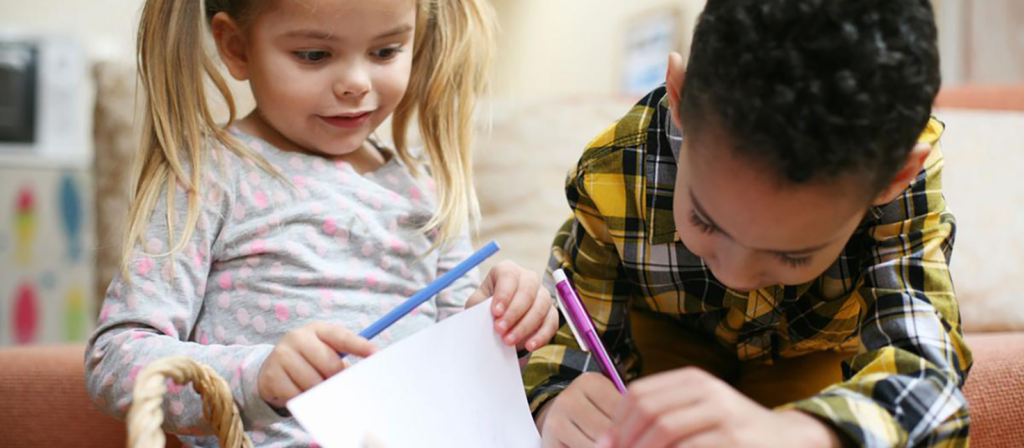
3.12 Navigate Physical Environments Safely
A preschooler’s day includes navigating hallways, climbing playground structures, stepping over objects, and exploring new spaces. Each of these actions depends on perceptual motor abilities.
For safe navigation, children need to:
- Judge distances and avoid obstacles.
- Adjust speed and direction based on terrain or surroundings.
- Maintain balance and orientation in dynamic environments.
When perceptual motor skills are weak, children may appear clumsy, have frequent accidents, or show anxiety in new settings. These issues can lead to reduced physical activity, increased adult intervention, and heightened frustration.
In contrast, children with strong skills can:
- Move through varied environments with independence and safety.
- Participate more fully in physical education and outdoor play.
- Gain physical confidence that transfers into other areas of learning.
Exploring environments safely also encourages curiosity, risk-taking, and a love of movement—all critical elements of holistic development.

4. How to Encourage Perceptual Motor Skill Development in Preschoolers?
การส่งเสริมการพัฒนาทักษะการรับรู้การเคลื่อนไหวสามารถทำได้ผ่านกิจกรรมที่มีโครงสร้างและไม่มีโครงสร้าง ต่อไปนี้เป็นวิธีบางประการในการเสริมสร้างทักษะเหล่านี้ในเด็กก่อนวัยเรียน:
4.1 Perceptual Motor Skills Program
A structured perceptual motor skills program can give preschoolers the necessary activities and exercises to strengthen their coordination. These programs often include gross and fine motor exercises and can be adapted based on the child’s developmental level.
4.2 Perceptual Motor Skills Activities
ผสมผสานกิจกรรมที่สนุกสนานและมีส่วนร่วม เข้าสู่กิจวัตรประจำวันเป็นวิธีที่ดีในการสนับสนุนพัฒนาการ กิจกรรมง่ายๆ เช่น:
- เกมส์บอล (เพื่อทักษะการเคลื่อนไหวร่างกายโดยรวม)
- ปริศนาและการวาดภาพ (เพื่อทักษะการเคลื่อนไหวที่ดี)
- หลักสูตรอุปสรรค (เพื่อการประสานงาน)
These perceptual motor skills activities build physical strength and coordination and enhance cognitive skills, such as problem-solving and memory.
4.3 Fun Activities for Perceptual Motor Skills
ทำให้การพัฒนาทักษะการรับรู้ทางกล้ามเนื้อเป็นเรื่องสนุก กิจกรรมต่างๆ เช่น การเต้นรำ การกระโดดบนแทรมโพลีน หรือการเล่นเกมโต้ตอบช่วยให้เด็กๆ สนุกสนาน การออกกำลังกาย while developing critical coordination and sensory skills. The more fun they have, the more likely they will engage with these activities and develop stronger skills over time.
5. Examples of Perceptual Motor Skills Activities for Preschoolers
ทักษะการเคลื่อนไหวเป็นสิ่งสำคัญสำหรับเด็กก่อนวัยเรียน เนื่องจากทักษะเหล่านี้จะช่วยสร้างพื้นฐานสำหรับการประสานงานทางร่างกาย การเติบโตทางปัญญา และการพัฒนาทางอารมณ์ การทำกิจกรรมทักษะการเคลื่อนไหวต่างๆ จะช่วยให้เด็กก่อนวัยเรียนสามารถพัฒนาความสามารถในการประมวลผลข้อมูลทางประสาทสัมผัสและตอบสนองด้วยการเคลื่อนไหวร่างกายที่ประสานกัน กิจกรรมเหล่านี้ครอบคลุมทักษะต่างๆ มากมาย ตั้งแต่การทรงตัวที่จำเป็นไปจนถึงการรับรู้เชิงพื้นที่ขั้นสูง
What examples of perceptual motor skills activities can be integrated into a preschooler’s routine?
กิจกรรมที่ช่วยพัฒนาทักษะการเคลื่อนไหวสามารถแบ่งได้เป็นหมวดหมู่ ได้แก่ การเคลื่อนไหวร่างกายโดยรวม การเคลื่อนไหวร่างกายส่วนเล็ก การรับรู้ร่างกาย และอื่นๆ ด้านล่างนี้ เราจะสรุปหมวดหมู่เหล่านี้โดยให้ตัวอย่างจริงของแต่ละกิจกรรมที่จะช่วยให้เด็กก่อนวัยเรียนพัฒนาทักษะการประสานงานและความสามารถในการรับรู้
5.1 Gross Motor Activities
กิจกรรมการเคลื่อนไหวร่างกายโดยรวมจะเน้นที่กลุ่มกล้ามเนื้อมัดใหญ่และช่วยให้เด็กเคลื่อนไหวร่างกายได้หลากหลาย เช่น วิ่ง กระโดด หรือปีนป่าย กิจกรรมเหล่านี้จะช่วยส่งเสริมพัฒนาการด้านความแข็งแรง การประสานงาน และความสมดุล
ตัวอย่างกิจกรรมการเคลื่อนไหวร่างกายโดยรวม
- การแข่งขันวิ่ง:ส่งเสริมให้เด็กๆ วิ่งระยะสั้นๆ ในร่มหรือกลางแจ้ง เปลี่ยนภูมิประเทศเพื่อเพิ่มความหลากหลาย เช่น วิ่งขึ้นเนินเล็กๆ หรือวิ่งรอบกรวย
- กระโดดตบมือ:การกระโดดตบเป็นวิธีที่ดีเยี่ยมในการพัฒนาการประสานงานของขาและแขน และยังช่วยเรื่องสุขภาพหัวใจและหลอดเลือดและการประสานงานของกล้ามเนื้ออีกด้วย
- การเตะบอล:ตั้งเป้าหมายหรือความท้าทายให้เด็ก ๆ สามารถเตะบอลให้โดนจุดที่กำหนดหรือทำ "ประตู" ได้ ซึ่งจะช่วยเสริมสร้างความแข็งแรงให้กับกล้ามเนื้อขาพร้อมฝึกการประสานงานระหว่างตาและเท้า
- การกระโดด:ทำเครื่องหมายสี่เหลี่ยมหรือวงกลมบนพื้นเพื่อสร้างเกมกระโดด เด็กๆ สามารถกระโดดจากสี่เหลี่ยมหนึ่งไปยังอีกสี่เหลี่ยมหนึ่ง ซึ่งจะช่วยพัฒนาความแข็งแรงของขาและความสมดุล
กิจกรรมการเคลื่อนไหวร่างกายขั้นพื้นฐานเหล่านี้ช่วยพัฒนาความแข็งแรงและการประสานงานที่จำเป็นสำหรับกิจกรรมทางกาย เช่น การเดิน การวิ่ง และการกระโดด นอกจากนี้ กิจกรรมเหล่านี้ยังช่วยเสริมการประมวลผลทางประสาทสัมผัส ซึ่งเป็นสิ่งสำคัญสำหรับทักษะทางวิชาการและทางกายภาพในภายหลัง

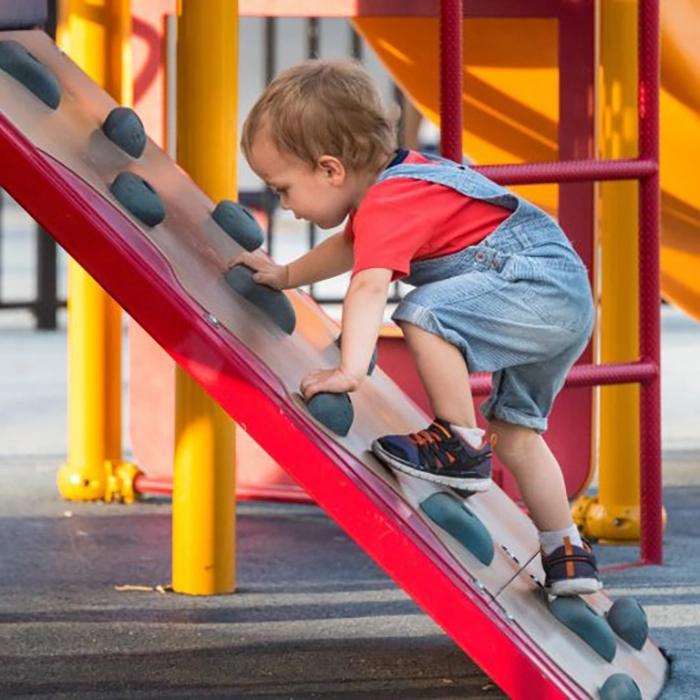
5.2 Fine Motor Activities
Fine motor activities target the smaller muscles in the hands and fingers, which are vital for writing, drawing, and eating tasks. These activities require precision and control, helping children improve their dexterity and hand-eye coordination.
ตัวอย่างกิจกรรมการเคลื่อนไหวกล้ามเนื้อมัดเล็ก
- การวาดภาพและการระบายสี: Provide your child with crayons, markers, and coloring books to help develop visual motor perceptual skills. As they draw shapes, they practice hand control and eye-hand coordination.
- การก่อสร้างด้วยบล็อก:กิจกรรมต่างๆ เช่น การต่อบล็อกหรือการประกอบโครงสร้างง่ายๆ จะช่วยให้เด็กๆ ฝึกทักษะการรับรู้ทางสายตาและเสริมสร้างการประสานงานของมือ
- การใช้กรรไกร:ให้เด็กๆ ฝึกตัดกระดาษด้วยกรรไกรนิรภัย การตัดเป็นเส้นตรงหรือเป็นรูปทรงต่างๆ จะช่วยพัฒนาทักษะการควบคุมกล้ามเนื้อมัดเล็กและสมาธิ
- การปักลูกปัดหรือการร้อยเชือกการร้อยลูกปัดเข้ากับเชือกหรือร้อยผ่านรูในการ์ดเป็นอีกกิจกรรมที่ดีเยี่ยมสำหรับการปรับปรุงการประสานงานระหว่างมือกับตาและทักษะการเคลื่อนไหวที่ดี
กิจกรรมเหล่านี้ช่วยส่งเสริมพัฒนาการด้านกล้ามเนื้อมัดเล็ก ซึ่งเป็นองค์ประกอบสำคัญของการเรียนรู้ในวัยเด็ก เมื่อเด็กก่อนวัยเรียนพัฒนาทักษะด้านกล้ามเนื้อแล้ว พวกเขาก็จะสามารถทำงานที่ซับซ้อนมากขึ้น เช่น การเขียนหนังสือหรือใช้อุปกรณ์ต่างๆ ได้ดีขึ้น

5.3 Body Awareness Activities
การรับรู้ร่างกายคือการเข้าใจว่าร่างกายเคลื่อนไหวอย่างไรในอวกาศและส่วนต่างๆ ของร่างกายประสานงานกันอย่างไร กิจกรรมเหล่านี้ช่วยให้เด็กก่อนวัยเรียนพัฒนาการรับรู้เกี่ยวกับร่างกายของตนเองและวิธีควบคุมร่างกาย
ตัวอย่างกิจกรรมการรับรู้ร่างกาย
- ไซมอนบอกว่า:เกมคลาสสิกนี้เหมาะอย่างยิ่งสำหรับการส่งเสริมการรับรู้ร่างกาย โดยเกมต้องการให้เด็กๆ ทำตามการเคลื่อนไหวร่างกายที่เฉพาะเจาะจง ซึ่งจะช่วยให้พวกเขาพัฒนาทักษะการควบคุมการกระทำของตนเองและเข้าใจว่าร่างกายทำงานอย่างไรในพื้นที่
- เดินเล่นกับสัตว์:ให้เด็กๆ เคลื่อนไหวเหมือนสัตว์ต่างๆ เช่น กระโดดเหมือนกบ เลื้อยเหมือนงู หรือเดินเตาะแตะเหมือนเพนกวิน กิจกรรมเหล่านี้จะช่วยพัฒนาทั้งการประสานงานของกล้ามเนื้อและการรับรู้ร่างกาย
- โยคะสำหรับเด็กท่าง่ายๆ เช่น “ท่าต้นไม้” และ “ท่าหมาคว่ำ” ช่วยให้เด็กเข้าใจว่าร่างกายของตนเคลื่อนไหวอย่างไร และเสริมสร้างความยืดหยุ่น สมดุล และการควบคุม
- การขว้างลูกโป่งการโยนลูกโป่งขึ้นไปในอากาศโดยพยายามไม่ให้ลูกโป่งสัมผัสพื้นจะช่วยให้เด็ก ๆ เรียนรู้วิธีเคลื่อนไหวร่างกายเพื่อตอบสนองต่อวัตถุภายนอก
กิจกรรมการรับรู้ร่างกายเหล่านี้เป็นพื้นฐานในการควบคุมการเคลื่อนไหวและปรับปรุงการประสานงาน การเข้าใจวิธีเคลื่อนไหวร่างกายในอวกาศจะช่วยให้เด็กๆ พัฒนาทักษะการเคลื่อนไหวและความมั่นใจทางร่างกาย
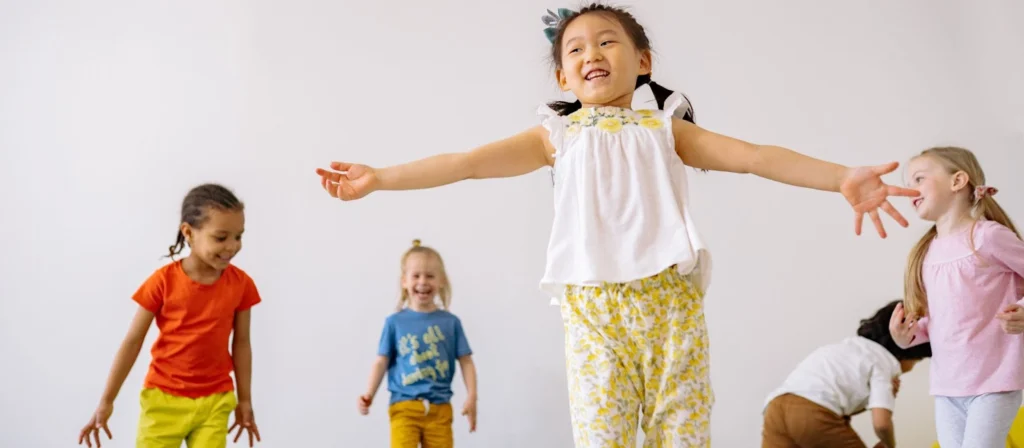
5.4 Spatial Awareness Activities
การรับรู้เชิงพื้นที่คือการเข้าใจว่าวัตถุและผู้คนมีความสัมพันธ์กันอย่างไรในอวกาศ การพัฒนาการรับรู้เชิงพื้นที่เป็นสิ่งสำคัญสำหรับเด็กก่อนวัยเรียน เพราะเป็นการวางรากฐานสำหรับทักษะทางวิชาการในภายหลัง เช่น การอ่านและคณิตศาสตร์
ตัวอย่างกิจกรรมการรับรู้เชิงพื้นที่
- เส้นทางอุปสรรค: Create an obstacle course with various objects that children need to navigate. Children practice spatial awareness by understanding the distance between themselves and objects as they weave through cones, crawl under tables, or jump over pillows.
- การล่าสมบัติ:จัดกิจกรรมล่าสมบัติ โดยให้เด็กๆ ต้องหาสิ่งของที่ซ่อนอยู่ตามเบาะแส เกมประเภทนี้จะช่วยให้เด็กๆ ฝึกฝนการรับรู้เชิงพื้นที่ด้วยการสำรวจสภาพแวดล้อมรอบตัว
- กล่องนำทาง:ใช้กล่องขนาดใหญ่ที่เด็กสามารถคลานผ่าน ปีนข้าม หรือเดินไปมาได้ วิธีนี้จะช่วยให้เด็ก ๆ ตระหนักถึงตำแหน่งของร่างกายในอวกาศ และพัฒนาความสามารถในการเคลื่อนไหวในอวกาศ
การรับรู้เชิงพื้นที่เป็นองค์ประกอบสำคัญของทักษะการเคลื่อนไหวทางการรับรู้ ช่วยให้เด็กๆ เข้าใจว่าตนเองเคลื่อนไหวอย่างไรในสภาพแวดล้อมรอบตัว และช่วยเพิ่มความสามารถในการทำภารกิจที่ซับซ้อนมากขึ้น
5.5 Directional Awareness Activities
Directional awareness is understanding left, right, up, down, forward, and backward directions. These skills are essential for following instructions and coordinating physical movements.
ตัวอย่างกิจกรรมการตระหนักรู้ทิศทาง
- ปฏิบัติตามคำแนะนำ:ให้คำแนะนำง่ายๆ แก่เด็ก เช่น “กระโดดไปทางซ้าย” “ปรบมือเหนือศีรษะ” หรือ “เดินไปทางขวา” แบบฝึกหัดเหล่านี้จะช่วยให้เด็กได้ฝึกฟังและปฏิบัติตามคำแนะนำพร้อมกับพัฒนาทักษะการรับรู้การเคลื่อนไหว
- กระโดดขาเดียวการเล่นกระโดดขาเดียวช่วยให้เด็ก ๆ เข้าใจและปฏิบัติตามคำสั่งบอกทิศทาง เช่น “กระโดดไปข้างหน้า” “หมุนตัว” หรือ “ก้าวไปทางขวา”
- ท่าเต้น:เล่นเกมที่เด็กๆ เลียนแบบท่าเต้นของคุณหรือทำตามการเคลื่อนไหวตามทิศทาง เช่น เลี้ยวซ้าย ก้มตัวลง หรือก้าวไปข้างหน้า
กิจกรรมการตระหนักรู้ทิศทางช่วยให้เด็กพัฒนาทักษะในการปฏิบัติตามคำสั่งและมีส่วนร่วมในงานที่ซับซ้อนมากขึ้นในภายหลัง
5.6 Integration Activities
Integration activities are a fantastic way to combine multiple perceptual motor skills in a single task. These activities challenge preschoolers to coordinate fine and gross motor movements while integrating sensory input. By practicing these activities, children strengthen their ability to perform complex tasks that require various skills, working together.
ตัวอย่างกิจกรรมบูรณาการ
- วอลเลย์บอลบอลลูน:ใช้ลูกโป่งสร้างเกมวอลเลย์บอลง่ายๆ เด็กๆ ต้องตีลูกโป่งซ้ำๆ ในพื้นที่ที่กำหนด กิจกรรมนี้ส่งเสริมทักษะการรับรู้ทางสายตาและการเคลื่อนไหว โดยเด็กๆ จะติดตามลูกโป่ง ปรับการเคลื่อนไหวให้เหมาะสม และใช้มือทั้งสองข้างตีอย่างมีสติ
- การสร้างหอคอยด้วยบล็อก:ให้เด็กๆ ใช้บล็อกตัวต่อสร้างหอคอยสูง เมื่อเรียงบล็อกเป็นชั้นๆ เด็กๆ จะฝึกทักษะการเคลื่อนไหวร่างกายทั้งแบบละเอียดและแบบหยาบ เนื่องจากพวกเขาต้องปรับตำแหน่งของบล็อกแต่ละบล็อกอย่างระมัดระวัง ขณะเดียวกันก็ต้องจัดการงานทางกายภาพในการยกและทรงตัวด้วย กิจกรรมนี้ยังผสมผสานการรับรู้เชิงพื้นที่ด้วย เนื่องจากกิจกรรมนี้จะกำหนดว่าแต่ละชิ้นส่วนจะวางอยู่ตรงไหน
- เส้นทางอุปสรรคที่มีความท้าทายมากมาย:กำหนดเส้นทางอุปสรรคที่เด็กๆ จะต้องคลาน กระโดด ทรงตัว และหยิบสิ่งของ ซึ่งอาจรวมถึงการกระโดดข้ามเบาะ ลอดผ่านกรวย หรือปีนใต้โต๊ะ เส้นทางดังกล่าวจะท้าทายทักษะการเคลื่อนไหวร่างกายขั้นพื้นฐาน (เช่น การกระโดดและคลาน) และทักษะการเคลื่อนไหวร่างกายที่ละเอียดอ่อน (เช่น การหยิบสิ่งของ) โดยผสมผสานการประมวลผลทางประสาทสัมผัสเข้ากับการกระทำทางกายภาพ
กิจกรรมบูรณาการเป็นกิจกรรมที่ดีเพราะเด็กๆ ต้องคิดอย่างรวดเร็วและปรับการเคลื่อนไหวตามสัญญาณประสาทสัมผัสต่างๆ เมื่อเด็กๆ ทำกิจกรรมเหล่านี้ พวกเขาจะฝึกรวมข้อมูลประสาทสัมผัสเข้ากับการเคลื่อนไหวร่างกาย ซึ่งท้ายที่สุดแล้วจะช่วยเสริมการประสานงานโดยรวมและพัฒนาการด้านกล้ามเนื้อ


5.7 Balance Activities
การทรงตัวเป็นทักษะการเคลื่อนไหวพื้นฐานอย่างหนึ่งที่เด็กก่อนวัยเรียนพัฒนาขึ้น เนื่องจากเป็นรากฐานของการประสานงานร่างกาย กิจกรรมที่เน้นการทรงตัวจะช่วยปรับปรุงความมั่นคง ความแข็งแรง การประสานงาน และการรับรู้เชิงพื้นที่ ทักษะเหล่านี้มีความสำคัญเนื่องจากช่วยสนับสนุนงานทางกายภาพที่ซับซ้อนมากขึ้น เช่น การวิ่ง การกระโดด และการเขียน
ตัวอย่างกิจกรรมการทรงตัว
- เดินอยู่บนเส้น:กิจกรรมการทรงตัวที่เรียบง่ายแต่ได้ผลคือให้เด็กๆ เดินเป็นเส้นตรง เช่น แปะเทปที่พื้น กิจกรรมนี้จะท้าทายความสามารถในการทรงตัวของเด็กๆ ขณะเดินไปข้างหน้า หากต้องการเพิ่มความหลากหลาย ให้เด็กๆ เดินถอยหลังหรือทรงตัวด้วยขาข้างเดียวขณะเดินตามเส้น โดยค่อยๆ เพิ่มระดับความยากขึ้น
- การฝึกปฏิบัติคานทรงตัว:ไม่ว่าคุณจะใช้คานทรงตัวแบบเชิงพาณิชย์หรือแบบทำเองที่มีแถบเทปติดอยู่ที่พื้น กิจกรรมนี้จะช่วยให้เด็กก่อนวัยเรียนพัฒนาสมดุลและการประสานงานที่ดีขึ้น พวกเขาสามารถฝึกเดินข้ามคาน เสริมสร้างกล้ามเนื้อแกนกลางลำตัว และปรับปรุงสมาธิ
- การปรับสมดุลวัตถุ:ท้าทายให้เด็กๆ ทรงตัววัตถุ เช่น ถุงถั่วหรือลูกบอลเล็กๆ ไว้บนศีรษะขณะเดินหรือยืน กิจกรรมนี้จะช่วยส่งเสริมการควบคุมร่างกายและช่วยให้เด็กๆ พัฒนาทักษะในการโฟกัสที่การรักษาสมดุล
- ขาตั้งขาเดียว:ให้เด็กๆ ยืนขาเดียวและค้างท่าไว้สองสามวินาที คุณสามารถทำให้กิจกรรมนี้สนุกขึ้นได้โดยขอให้พวกเขา “แกล้งทำ” เป็นสัตว์ต่างๆ เช่น นกฟลามิงโกหรือนกกระสา การทำเช่นนี้จะช่วยเสริมสร้างความแข็งแรงของกล้ามเนื้อและช่วยให้ทรงตัวได้ดีขึ้นเมื่อเวลาผ่านไป
กิจกรรมการทรงตัวจะช่วยพัฒนาทักษะการรับรู้การเคลื่อนไหวและช่วยให้เด็กๆ มีความมั่นใจในความสามารถทางกายภาพของตนเองมากขึ้น ยิ่งเด็กๆ ฝึกการทรงตัวมากเท่าไร การควบคุมร่างกายของพวกเขาก็จะพัฒนาขึ้นเท่านั้น ซึ่งสามารถนำไปใช้ในงานอื่นๆ เช่น การกระโดด การวิ่ง และแม้กระทั่งการเรียนรู้การเขียนได้

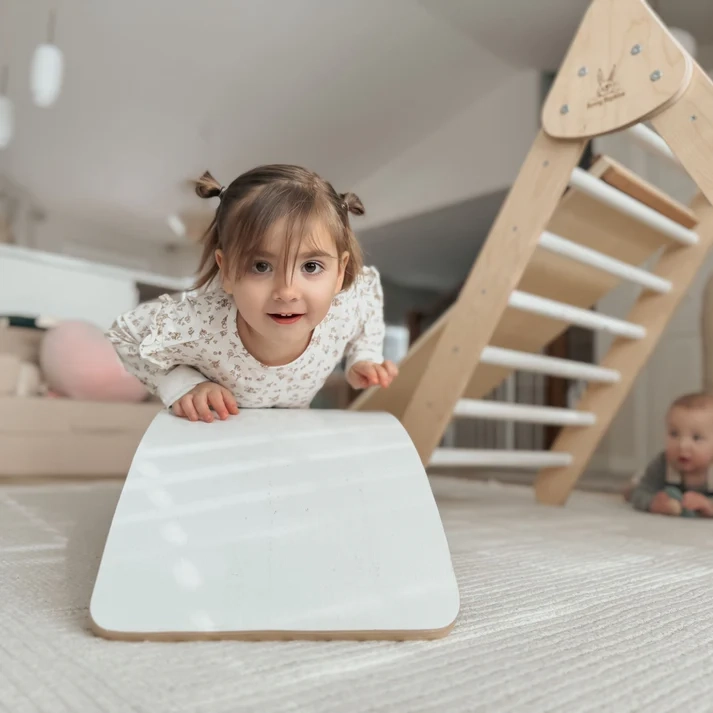
5.8 Expressive Activities
กิจกรรมการแสดงออกช่วยให้เด็กก่อนวัยเรียนใช้ร่างกายเพื่อถ่ายทอดอารมณ์ ความคิด หรือเรื่องราว กิจกรรมเหล่านี้ช่วยเสริมทักษะการรับรู้การเคลื่อนไหว เช่น การประสานงานและการทรงตัว และส่งเสริมการแสดงออกทางอารมณ์และความคิดสร้างสรรค์
ตัวอย่างกิจกรรมการแสดงออก
- การเต้นรำและการเคลื่อนไหว:ปล่อยให้เด็กเคลื่อนไหวตามจังหวะดนตรีอย่างอิสระ โดยส่งเสริมให้พวกเขาแสดงอารมณ์ เช่น ความสุข ความตื่นเต้น หรือความเศร้าผ่านการเคลื่อนไหว การเต้นรำเป็นโอกาสที่ดีในการเสริมสร้าง กรoss motor skills and body awareness while allowing preschoolers to experiment with rhythm, timing, and coordination. You can add challenges like freeze dances or follow-the-leader movements to make it more interactive.
- การเล่นตามบทบาท:กิจกรรมการเล่นตามบทบาทช่วยให้เด็กๆ ได้ใช้จินตนาการและการเคลื่อนไหวร่างกายเพื่อสวมบทบาทเป็นตัวละครต่างๆ หรือแสดงสถานการณ์ต่างๆ ไม่ว่าพวกเขาจะเล่นเป็นสัตว์ ซูเปอร์ฮีโร่ หรือคนธรรมดา การเล่นตามบทบาทจะช่วยให้พวกเขาใช้ร่างกายเพื่อแสดงบทบาทและอารมณ์ต่างๆ การเล่นประเภทนี้ช่วยส่งเสริมการรับรู้ร่างกาย การทรงตัว และทักษะการเคลื่อนไหวเล็กๆ น้อยๆ ในขณะที่พวกเขาเคลื่อนไหวและแสดงท่าทางที่เกี่ยวข้องกับบทบาทของตน
- เกมแพนโทไมม์:ในเกมเหล่านี้ เด็กๆ สามารถแสดงอารมณ์หรือการกระทำต่างๆ ได้โดยไม่ต้องพูด โดยอาศัยภาษากายเพียงอย่างเดียวในการสื่อสาร ตัวอย่างเช่น คุณอาจขอให้เด็กๆ แสดงละครใบ้เรื่อง “กินไอศกรีมโคน” หรือ “ปีนเขา” กิจกรรมเหล่านี้จะช่วยให้เด็กๆ ใช้ร่างกายอย่างสร้างสรรค์ ขณะเดียวกันก็ช่วยพัฒนาทักษะการรับรู้ทางสายตา การเคลื่อนไหว และการรับรู้เชิงพื้นที่ด้วย
กิจกรรมการแสดงออกเหล่านี้ช่วยให้เด็กๆ ได้สำรวจอารมณ์และความคิด ขณะเดียวกันก็พัฒนาทักษะการเคลื่อนไหวและการรับรู้ในรูปแบบที่สนุกสนานและสร้างสรรค์

6. Which Skill Is an Example of a Perceptual Motor Skill?
ทักษะการเคลื่อนไหวทางการรับรู้คือความสามารถในการผสานการรับข้อมูลจากประสาทสัมผัสและการตอบสนองของกล้ามเนื้อเพื่อทำงานที่ต้องใช้การประสานงาน ทักษะเหล่านี้มีความสำคัญสำหรับกิจกรรมต่างๆ ตั้งแต่การเรียน เช่น การเขียน ไปจนถึงกิจกรรมทางกาย เช่น กีฬา
6.1 Perceptual Motor Skills and Movement Concepts
การทำความเข้าใจว่าทักษะการรับรู้และการเคลื่อนไหวสัมพันธ์กับแนวคิดเกี่ยวกับการเคลื่อนไหวอย่างไรถือเป็นกุญแจสำคัญในการสนับสนุนพัฒนาการของเด็กก่อนวัยเรียน แนวคิดเกี่ยวกับการเคลื่อนไหวเหล่านี้ครอบคลุมถึงความเข้าใจในความสัมพันธ์เชิงพื้นที่ การเคลื่อนไหวตามทิศทาง ความสมดุล และจังหวะ ซึ่งทั้งหมดนี้ช่วยให้เด็กๆ เข้าใจสภาพแวดล้อมทางกายภาพของตนเองได้
ปัจจัยที่มีผลกระทบต่อทักษะการรับรู้และการเคลื่อนไหว
การพัฒนาทักษะการรับรู้การเคลื่อนไหวส่งผลโดยตรงต่อความสามารถของเด็กในการเคลื่อนไหวอย่างมีประสิทธิภาพและเข้าใจโลกกายภาพของตนเอง ตัวอย่างเช่น เด็กก่อนวัยเรียนที่มีทักษะการรับรู้การเคลื่อนไหวที่ดีสามารถปฏิบัติตามคำสั่ง เช่น "วิ่งไปข้างหน้า" หรือ "กระโดดขึ้น" ได้ง่ายขึ้น เนื่องจากพวกเขาเชี่ยวชาญในการประสานงานระหว่างข้อมูลรับรู้และการเคลื่อนไหวของร่างกาย
ตัวอย่างแนวคิดเกี่ยวกับทักษะการรับรู้การเคลื่อนไหวและการเคลื่อนไหว
Some activities that incorporate perceptual motor skills and movement concepts include following complex directions in dance, moving through obstacle courses, or participating in group sports. These activities require children to adjust their movements based on sensory feedback, enhancing their perceptual motor coordination.

6.2 Developing Ocular Motor and Visual Perceptual Skills
Ocular motor and visual perceptual skills are essential for the eyes to track, focus, and interpret visual information. These skills support reading, writing, hand-eye coordination, and spatial awareness—core components of early learning. Strengthening them in preschoolers helps improve attention, visual memory, and the ability to recognize patterns or letters. Activities like tracing, mazes, and visual matching games effectively promote development. By focusing on these foundational visual motor and visual perceptual skills, children build the visual efficiency needed for academic and everyday success. Consistent practice boosts school readiness and enhances confidence in physical and classroom tasks.

7. Differences in Perceptual Motor Skill between Infants, Toddlers, and Preschoolers
| ด้าน | Infants (0–12 months) | Toddlers (1–3 years) | Preschoolers (3–5 years) |
|---|---|---|---|
| ทักษะการเคลื่อนไหวร่างกายโดยรวม | Start walking, climbing, running, pushing, and pulling toys | Improve coordination in running, jumping, hopping, and balancing | Grasping objects, reaching, and hand-to-mouth movement |
| ทักษะการเคลื่อนไหวที่ดี | Scribbling, stacking blocks, and using spoons | Drawing shapes, using scissors, and completing puzzles | Respond to light, sound, and texture passively |
| Visual Motor Integration | Tracking faces/toys, recognizing contrast | Improved hand-eye coordination through simple play | Precise visual tracking and motor control for drawing/writing tasks |
| Sensory Processing | Can follow complex movement directions, and improved body control | Active exploration using all senses | Use sensory cues to guide purposeful movement |
| Body Awareness | Limited to spontaneous movement and reflexes | Understand body parts, mimic gestures | Can follow complex movement directions, and has improved body control |
| Spatial Awareness | Minimal; start recognizing caregivers’ distance | Begin navigating space, avoiding obstacles | Navigate environments confidently with improved spatial judgment |
| Directional Awareness | Absent; movement is reactive | Begin understanding in/out, up/down | Understand left/right, forward/backward in structured tasks |
| Motor Planning | Primitive; trial-and-error movement | Basic planning, trial strategies during play | Intentional actions with goal-directed movement |
คำถามที่พบบ่อย
1. ทักษะการรับรู้การเคลื่อนไหวในแง่ง่ายคืออะไร?
Perceptual motor skills involve interpreting sensory information and responding with coordinated physical movements. They are crucial for both cognitive development and physical tasks.
2. ฉันจะปรับปรุงทักษะการรับรู้การเคลื่อนไหวของเด็กก่อนวัยเรียนได้อย่างไร
ส่งเสริมกิจกรรมต่างๆ เช่น การวาดภาพ การวิ่ง การกระโดด และการเล่นเกมที่ต้องใช้การประสานงานทางร่างกายและการประมวลผลทางประสาทสัมผัส เพื่อปรับปรุงทักษะการรับรู้การเคลื่อนไหว
3. เหตุใดทักษะการรับรู้การเคลื่อนไหวจึงมีความจำเป็นสำหรับเด็กก่อนวัยเรียน?
ทักษะการเคลื่อนไหวเป็นสิ่งสำคัญสำหรับการเรียนรู้ทางวิชาการ สุขภาพร่างกาย และพัฒนาการทางอารมณ์ ช่วยให้เด็กๆ สามารถทำกิจกรรมต่างๆ เช่น การเขียน การอ่าน และการมีส่วนร่วมในกิจกรรมทางสังคม
4. ตัวอย่างทักษะการรับรู้การเคลื่อนไหวสำหรับเด็กก่อนวัยเรียนมีอะไรบ้าง
Examples include running, jumping, drawing, catching a ball, and completing puzzles. These activities help preschoolers develop both visual motor and visual perceptual skills.
5. ฉันสามารถช่วยให้ลูกของฉันพัฒนาทักษะการรับรู้การเคลื่อนไหวและแนวคิดการเคลื่อนไหวได้อย่างไร
รวมกิจกรรมที่ท้าทายทั้งการประมวลผลทางประสาทสัมผัสและการเคลื่อนไหวทางกายภาพ เช่น การต่อบล็อก การเล่นเกมลูกบอล หรือการเข้าร่วมกิจกรรมวิ่งหนีอุปสรรค
6. วิธีที่ดีที่สุดในการนำโปรแกรมทักษะการรับรู้การเคลื่อนไหวไปใช้ที่บ้านคืออะไร?
เพื่อปรับปรุงทักษะการรับรู้การเคลื่อนไหว ให้สร้างกิจวัตรประจำวันที่มีโครงสร้างชัดเจน รวมถึงกิจกรรมทางกายในร่มและกลางแจ้ง เช่น การเต้นรำ การวิ่ง และการก่อสร้าง.
บทสรุป:
Incorporating perceptual motor skills activities into a preschooler’s routine is essential for fostering well-rounded development. Activities like balance exercises, integration tasks, and expressive activities enhance physical coordination and improve cognitive abilities such as spatial awareness, body control, and emotional expression. Preschoolers strengthen fine and gross motor skills by engaging in diverse activities, boosting creativity and confidence. The more these activities are integrated into daily routines, the better children will develop the foundational skills for academic success, social interactions, and overall well-being. These early experiences play a key role in preparing children for more complex tasks as they grow.








